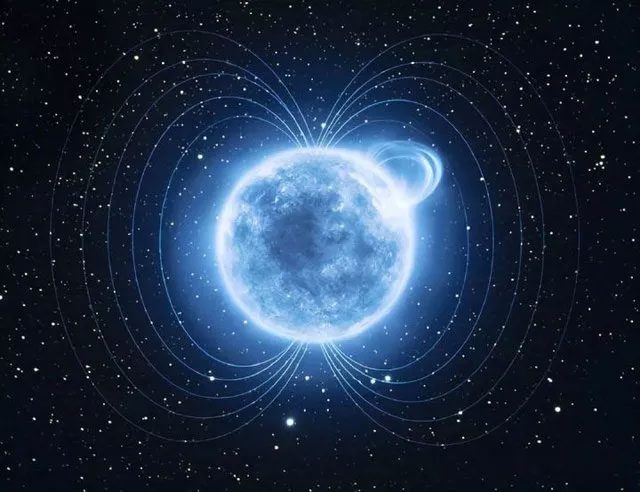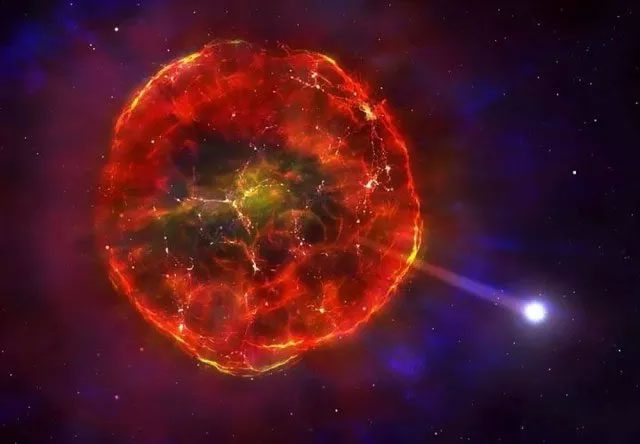PSR J1748−2446ad is located approximately 18,000 light-years from Earth and is currently the fastest-spinning celestial object known in the universe.
PSR J1748−2446ad holds the title of the fastest-spinning celestial object in the known universe, with an equatorial linear speed of about 24% the speed of light, or 70,000 kilometers per second. This planet completes a rotation in just 0.0014 seconds, allowing it to spin 716 times in one second, which is equivalent to about 42,000 times in a minute. In contrast, Earth has a much slower rotation speed, taking approximately 24 hours to complete one rotation.

PSR J1748−2446ad is known as the fastest pulsar, emitting signals at a frequency of 716 Hz, or 716 times per second. This pulsar was discovered by Jason W. T. Hessels from McGill University on November 10, 2004, and was confirmed on January 8, 2005.
PSR J1748−2446ad is a rapidly rotating neutron star, also known as a pulsar, that regularly emits radio signals and was once thought to be a signal from an extraterrestrial civilization.
This incredible speed is due to its formation from the collapse of material in the core of a massive star following a supernova explosion. Due to the conservation of angular momentum, this contraction dramatically increases the rotation speed of the neutron star.
Research suggests that the fastest neutron star in the universe could theoretically spin at 1,200 revolutions per second, but no neutron star has been observed spinning at such a rate. Since linear rotational speeds cannot exceed the speed of light, the theoretical maximum rotation speed of a neutron star with a diameter of 30 km cannot exceed 3,180 revolutions per second.

PSR J1748–2446ad has a surface that is not only solid but also harder than diamond. Its density is over 50 trillion times that of lead. Its magnetic field is a trillion times stronger than that of our Sun.
Reports indicate that PSR J1748−2446ad is located about 18,000 light-years from Earth, with a diameter of approximately 30 km, yet it has a mass twice that of our Sun.
The mass of about two Suns is concentrated into a volume with a diameter of about 30 km, which means that the density of material in PSR J1748−2446ad is extremely high, reaching 100 million tons per cubic centimeter. This also implies that its surface gravity is extraordinarily strong, creating a highly attractive environment that flattens its surface. If there were a “mountain” on the neutron star, it would be less than a millimeter high.

PSR J1748−2446ad is situated in a globular cluster known as Terzan 5, which is approximately 18,000 light-years away from Earth in the Sagittarius constellation. It is part of a binary system and experiences regular eclipses with an intensity of about 40%.
The reason why objects with such high rotation speeds do not disintegrate is that they are bound by a strong gravitational field. If Earth were to rotate too quickly, it would have long been torn into four or five pieces.
Observations show that PSR J1748−2446ad is part of a binary star system, and its companion star is likely a much smaller mass star compared to the Sun, with a radius 5-6 times that of the Sun, and is gradually being consumed by this neutron star. If a massive star is swallowed by the neutron star, and as the mass increases, the gravitational force increases, the neutron star could continue to evolve into a black hole.

Pulsars are rapidly spinning neutron stars that emit high-intensity radiation, while magnetars are remnants of stars with extremely strong magnetic fields. All types of neutron stars form when massive stars exhaust their nuclear fusion fuel at the end of their life cycle, causing the original star to no longer resist gravitational collapse. This results in a massive supernova explosion, leaving behind a cosmic remnant—a neutron star with such dense material that a teaspoon of its substance would weigh about 3.9 trillion kilograms.
Pulsars were first discovered in 1967 by Jocelyn Bell Burnell and Antony Hewish at the University of Cambridge through radio wave radiation. Later, X-ray and gamma-ray pulsars were also discovered. This success earned Antony Hewish the Nobel Prize in 1974. They detected special radio waves, including periodic pulses ranging from milliseconds to several seconds. Their initial hypothesis was that these waves came from extraterrestrial civilizations. Today, the scientific community tends to acknowledge that the regularity of these radio waves is due to emissions from a very small and rapidly spinning magnetized star. For a star to spin so fast without being torn apart by centrifugal force, it must be extremely dense, which is a characteristic of neutron stars. Pulsars are distant neutron stars that spin rapidly and emit a beam of electromagnetic radiation at regular intervals, similar to a lighthouse beam sweeping across the coast. Although the first pulsar was discovered in 1967, scientists have long wondered why these stars can emit pulses and the reasons behind their non-continuous pulsing. |


















































